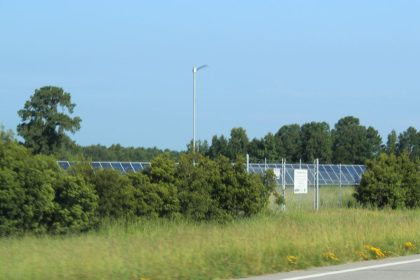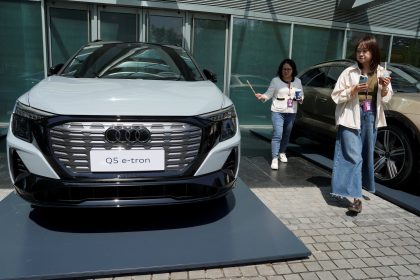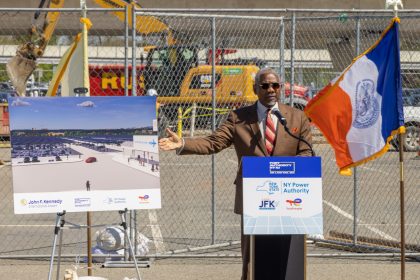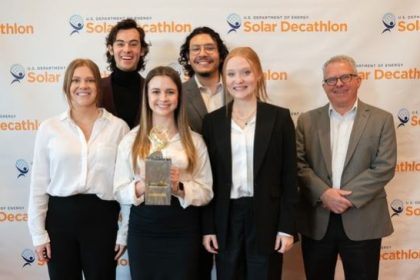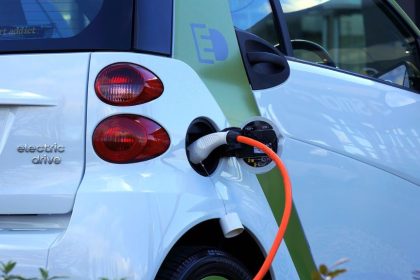Consortium Releases Supply Chain ‘Road Map’ for US Offshore Wind Development
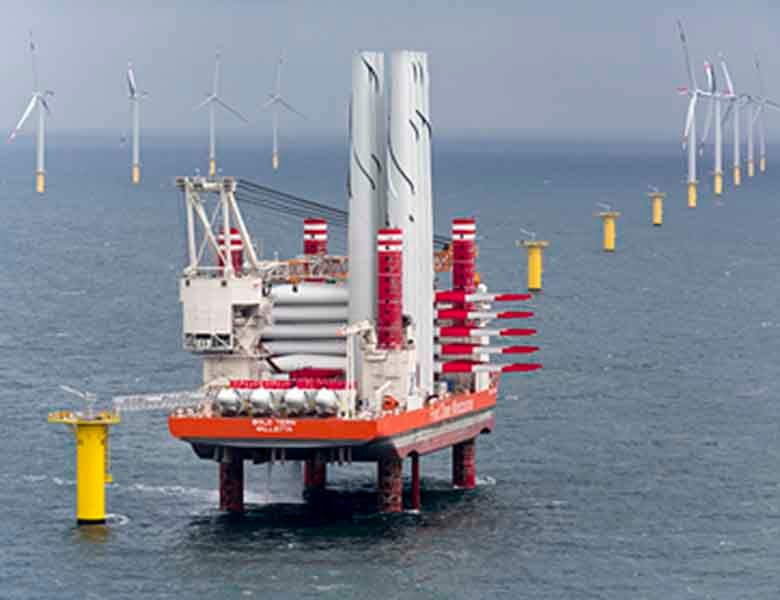
WASHINGTON — If the U.S. is going to fulfill President Biden’s goal of deploying 30 GW of offshore wind energy by 2030, the government, industry stakeholders and investors will need to aggressively focus on the development of a domestic supply chain to the sector, a new report says.
Published on Tuesday by the National Offshore Wind Research and Development Consortium, the 209-page report describes how the United States could develop a fully domestic offshore wind energy supply chain.
“The opportunity to create a resilient and equitable domestic supply chain is one of the most exciting aspects of our offshore wind goals,” said Matt Shields, senior offshore wind analyst at NREL, in a written statement.
“This supply chain would increase our chances of meeting the 30 GW by 2030 target, create a huge number of jobs and economic benefits, and most importantly, position the sector for sustainable growth beyond 2030. This report identifies critical actions that we need to take as an industry to develop the supply chain quickly, but also strategically and equitably,” Shields added.
The consortium — a partnership of the National Renewable Energy Laboratory, the Business Network for Offshore Wind, DNV, the Maryland Energy Administration, the New York State Energy Research and Development Authority, and the U.S. Department of Energy — then goes on to discuss barriers that could prevent or delay supply chain expansion and offers potential solutions that could help overcome these challenges.
According to the group, achieving Biden’s goal will likely require the installation of more than 2,100 wind turbines in U.S. waters.
And doing this will create substantial demand for the components needed to build these wind turbines and balance-of-system components such as foundations and cables.
The problem is, at present, there’s limited global manufacturing capacity for the necessary components. The development of a domestic supply chain, the consortium says, would both reduce reliance on global manufacturers and create jobs and other economic benefits for the U.S.
But that’s easier said than accomplished, the report says.
The reality is a domestic offshore wind energy supply chain would require significant development of manufacturing facilities, ports, vessels and a trained workforce to produce, transport and install the major components required for an offshore wind energy project.
Other important infrastructure investments that will likely be necessary to enable major offshore wind development, such as expansion of the transmission grid, are outside the scope of the report.
How a Domestic Offshore Wind Supply Chain Might Develop
While there is widespread agreement that a domestic supply chain will be critical for the sustainable growth of offshore wind energy in the United States, there is also a general uncertainty about the scope of such a supply chain, the development time frames needed to build critical resources and the level of investment required.
The authors of the report offer a number of short-, medium- and long-term actions that would contribute to the creation of the supply chain they envision.
Short-Term Actions (2023-2024):
Convene working groups focused on regional and holistic supply chain development. The formation of actively funded groups with decision-making authority, diverse membership, established communication practices and clear visions for supply chain development.
Identify locations to build the next wave of supply chain development equitably and efficiently. Announcements and initial permitting applications for a sufficient number of facilities (e.g., factories, ports, vessels) to meet the demand of the domestic pipeline.
Continue to expand the offshore wind energy pipeline. A predictable timeline for lease area sales and state procurement solicitations that extends to (at least) 2035.
Assess the need for and impact of incentive mechanisms beyond existing programs. A predictable approach for incentive programs to construct new supply chain assets (e.g., factories, ports, vessels) and produce Tier 1, 2 or 3 components that are not covered through the Inflation Reduction Act or other existing programs.
Establish strategies and incentive mechanisms targeted at floating wind infrastructure. A clear and consistent vision that outlines the infrastructure needed to deploy commercial-scale floating wind, including preferred port locations, newly built vessels and industrialization requirements for floating platforms.
Establish curriculum and funding streams for workforce training centers. A standard curriculum for offshore wind energy workers that is acceptable to all major offshore wind manufacturers; committed funds sufficient to open training centers and train an initial cohort.
Conduct outreach and education activities with existing suppliers to increase awareness of offshore wind energy opportunities. Increased engagement and contracting between major manufacturers and domestic businesses.
Medium-Term Actions (2025–2030):
Construct the major supply chain facilities needed to meet the demand pipeline. A network of domestic manufacturing facilities that can support the demand from all offshore wind energy projects in the United States; a system of ports and vessels that can support annual deployment without creating significant delays.
Continue to expand the offshore wind energy pipeline. A predictable timeline for lease area sales and state procurement solicitations that extends to (at least) 2040 and potentially as far as 2050.
Leverage national, regional and industry working groups to share and develop best practices for supply chain activities. A standardized approach to community engagement, permitting, developing supporting supply chains, and adapting to evolving technologies throughout different states and supply chain sectors.
Incorporate learning from early-stage commercial-scale projects into ongoing operations and decision making. An evolved supply chain that develops in parallel with technologies and processes that are customized for the social and regulatory considerations within the U.S. market (e.g., foundation technologies to minimize pile-driving noise, refined feeder barge strategies to reduce at-sea risk, improved communication and community outreach).
Train a sufficient manufacturing workforce. Workforce training centers and apprenticeship programs produce a sufficient throughput of trained workers to fill all domestic manufacturing jobs.
Evaluate procedural and impact equity metrics for early-stage commercial-scale projects and incorporate best practices into ongoing supply chain development activities.
Commonly used best practices that incorporate community feedback throughout the decision-making process for supply chain investment that apply frameworks that have been refined using lessons learned from early stage projects.
Long-Term Actions (Beyond 2030):
Maintain and upgrade key supply chain infrastructure to adapt to evolving technologies.
Existing resources developed in the 2020s (e.g., manufacturing facilities, ports, vessels, workforce training centers) remain active and capable of producing new components (e.g., larger wind turbine components, floating wind components on the East Coast), possibly with the inclusion of new innovations or automation; floating wind infrastructure continues to expand to support increasing levels of deployment.
Expand supply chain infrastructure to new regions using lessons learned from early build-out. Offshore wind energy supply chain hubs that are present throughout the United States with capabilities customized for the specific technology, regulatory and community needs of each region.
Fill manufacturing gaps in supporting supply chains with domestic production. Critical subcomponents and subassemblies are primarily manufactured in the United States to decrease reliance on global supply chains.
Continue to expand the offshore wind energy pipeline. A predictable timeline for lease area sales and state procurement solicitations that extends through 2050.
Potential Barriers
The following actions described by the report authors are designed to overcome key barriers that are identified through industry outreach and the analysis conducted in this report.
- The Biden administration, the Bureau of Ocean Energy Management and individual state governments have made substantial progress to create a strong pipeline of planned projects and procurement targets. However, uncertainty surrounding the potential impacts of construction delays, cost overruns, legal complications or changes in government support for offshore wind energy creates an investment risk that makes it difficult to secure financing for new supply chain facilities (e.g., factories, ports and vessels).
- Major offshore wind manufacturing facilities can only be built in suitable ports, but construction of these facilities is constrained by limited available port space and uncertain permitting and construction timelines. Wind turbine capacities have been rapidly increasing in recent years, and if this trend continues, supply chain assets (including ports and vessels) designed around current technology may become obsolete or require additional investment before paying off the upfront investment.
Existing supplier networks will be stressed to provide the required raw materials and subcomponents needed to fabricate major components.
- Existing port and vessel infrastructure is inadequate to install 30 GW of offshore wind energy by 2030.
- Some offshore wind energy components require a specialized manufacturing workforce that may not be readily available in the United States.
- Recent federal incentives such as clean energy tax credits in the Inflation Reduction Act of 2022 will help domestically produced components be cost competitive with imports from established international manufacturing facilities. However, additional incentives may be required to encourage domestic manufacturing of components or supply chain assets that are either not considered in the IRA or receive tax credits that are smaller than the cost premium for domestic manufacturing.
- Incorporating equity and sustainability into supply chain decision-making is resource intensive and insufficiently incentivized, which may result in unjust outcomes for host communities.
“Developing our nation’s vast offshore wind resources will provide reliable clean energy to coastal communities and help us reach our climate goals. It also presents a significant opportunity to create tens of thousands of good-paying jobs and expand domestic manufacturing across the country,” said Alejandro Moreno, acting assistant secretary for Energy Efficiency and Renewable Energy at the U.S. Department of Energy.
“With the help of the roadmap laid out in this report, we can catalyze progress to realize this immense potential,” Moreno said.
Dan can be reached at [email protected] and at https://twitter.com/DanMcCue


















